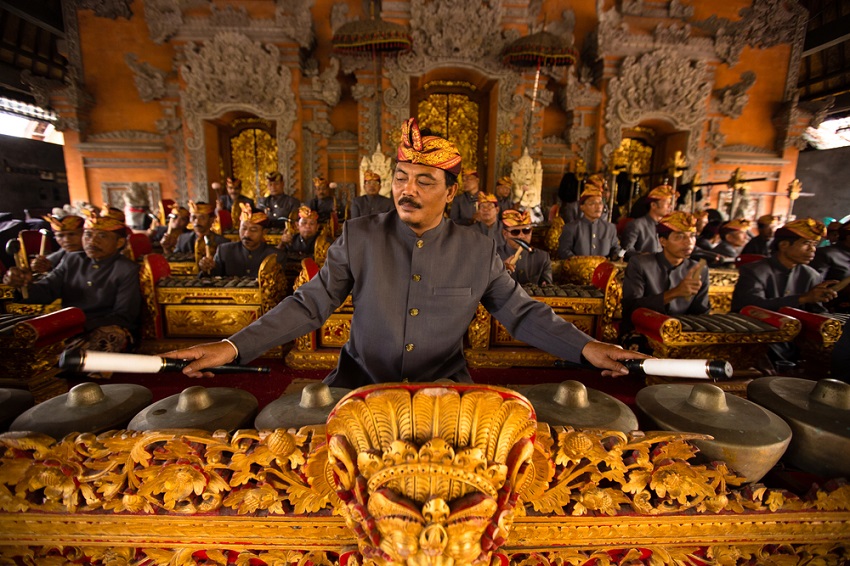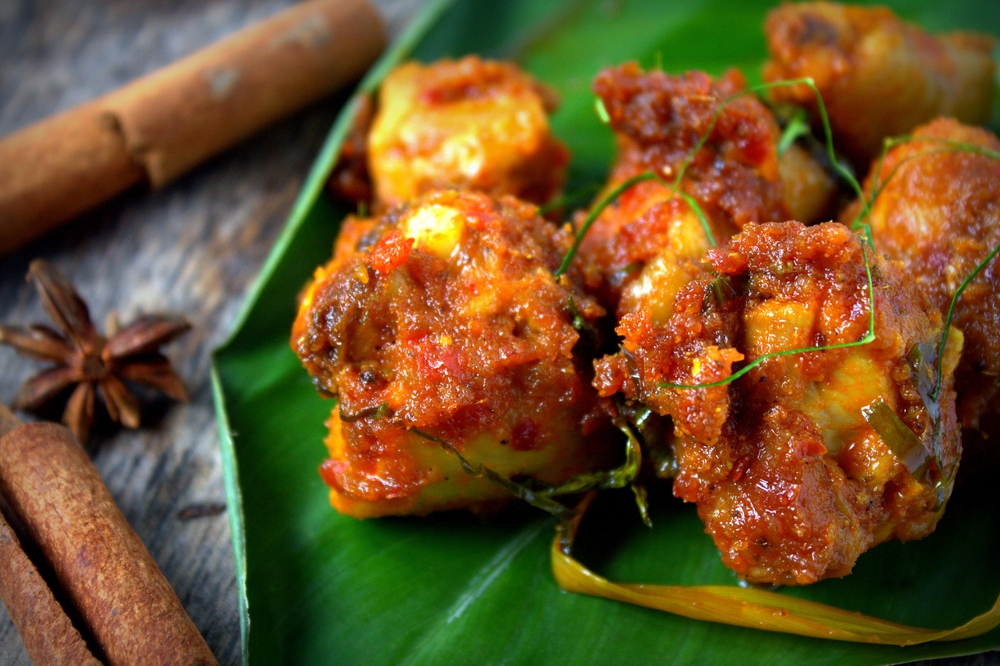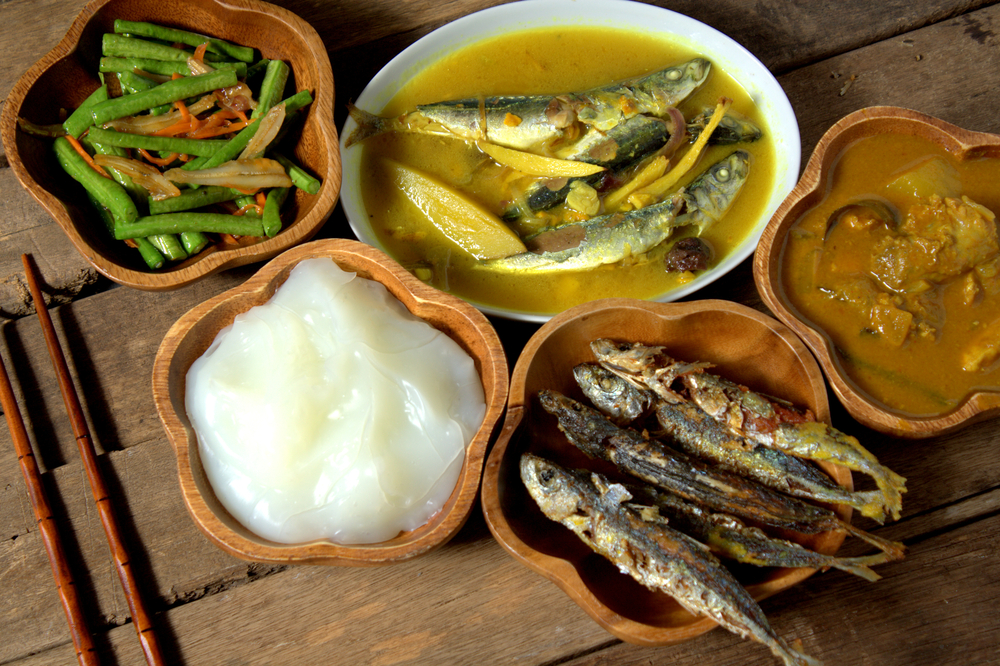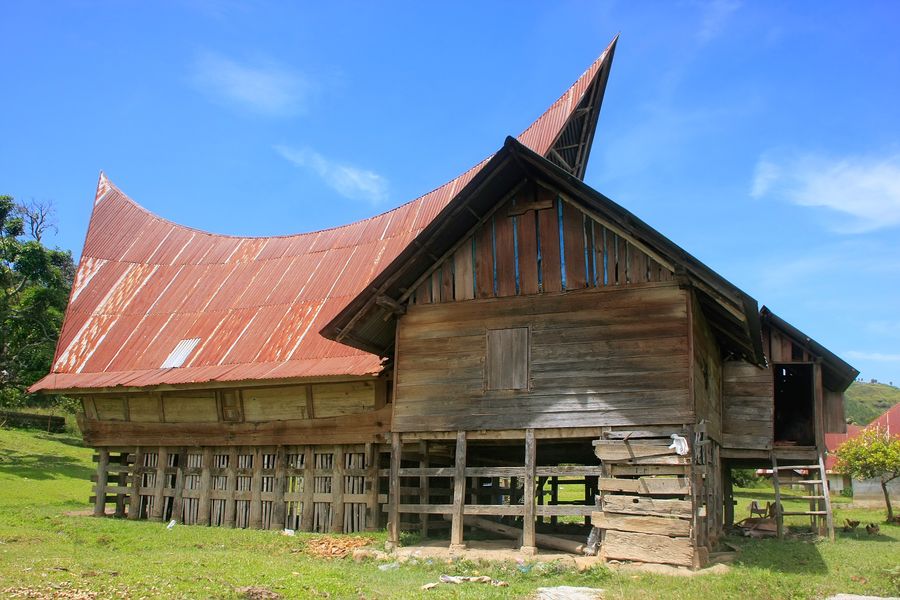Indonesia - performing arts
Indonesian arts and performances are different on both court and native levels due to various ethnic groups. However, Indonesian dancing arts had been initiated by the court where the royals and nobles were traditionally and strictly taught in the Sultan palace. The teachers would perform and demonstrate to the students while not being able to touch each other. The institution was established later, so the teaching styles became different. The teachers and the students could lay a finger on each other. The dancing arts in Java, Bali and other islands have their own distinctive characteristics regarding environments, traditions and ways of life. (พรศิริ ถนอมกุล, 2554:34)
In the past, the dancing arts were not only serving leisure purposes but also ritual purposes such as wedding ceremonies and the royal birthdays. These days some performances like Perdoyo Dance, Slimpy Dance and Bakson Serka Madurro are cut shorter making it more contemporary. (ฉันทนา เอี่ยมสกุล, 2538:53) Moreover, some ethnic dances serve a purpose of worshipping superstitious power. Most ethnic groups have dancing rituals related to one’s circle of life such as birth, death, marriage, and coming of age. Apart from these, there are dances related to agriculture, remedies and exorcising evil spirits. Men and women are recruited to be actors and actresses in a performance like Barong Dance of Bali. While in Java, most populations are Muslim, the dances have been developed for public showcases and tourism. Those are Guda Gerpang, Guda Lumbing, Re-ok and Jalitan. (ศิริพร โตกทองคา, ผู้แปล, 2549:78)
One of the most famous and popular performance in Indonesia is Wayang, displaying shadow figures. There are several types of shadow figure performances in Indonesia. In general, it is called ‘Wayang Kulit’ in which Wayang comes from Javanese language ‘Baying’ meaning a shadow and Kulit means animal skins. The most enduring Wayang performance is called Wayang Perwa displaying and showing Mahabharat and Ramayana. However, the plots are different from the original Indian versions with the plots being more complicated and Panakawan, a joker, being added. The joker is the protagonist helper assisting him to achieve his quest. The story is a reference to the religious teachings or evidence showing that the good always prevails. (สมเด็จพระเทพรัตนราชสุดาฯสยามบรมราชกุมารี, 2528:16)
There are several types of Wayang. Wayang Gedog, for example, shares some similarities with Wayang Perwa except that it prefers featuring eastern Javanese folklores. Wayang Suluh is a governmental tie-in showing any current issues or imposing policies. Wayang Wahya is a means of spreading Christianity. Wayang Gelok is a puppet show favored in western Java. (สมเด็จพระเทพรัตนราชสุดาฯสยามบรมราชกุมารี, 2528:16) Wayang Wong or Wayang Orang is the most famous and similar to shadow figure showing. (ศิริพร โตกทองคา, ผู้แปล, 2549:79)
Gamelan is the most popular and famous musical band in Indonesia consisting of metal music instruments. The word ‘Gamelan’ comes from ‘Gamel’ meaning a handle or an axe. Therefore, most of the instruments are percussion instruments made of brass such as gong. (ศิริพร โตกทองคา, ผู้แปล, 2549:82) Gamelan is featured in singing session, dancing and occasional performances regarding entertainment, rituals and celebrations. (Benjamin Brinner, 2008:4)
Balinese Gamelan is the most famous one as its rhythm is difficult to follow. With a combination of metal instruments, fiddles and flutes, the melody is touching and goes smoother. On the other hand, Javanese Gamelan is slower and easier to catch up with the use of metal instruments. Balinese Gamelan performances take place at festivals and celebrations according to Hindu calendar. There are also music competitions between villages to encourage musicians and song composers to keep improving themselves. (ศิริพร โตกทองคา, ผู้แปล, 2549:85)
As the country is keeping pace with the world, the new kinds of performances always excite people. This can be a comparison to what have been performing for a long time. Thus, to support Indonesian arts and performances, the government established the arts institution. A combination between the old and the new western performances gave birth to Sendatari, a pantomime play with expressive acts and contemporary clothing. (ศิริพร โตกทองคา, ผู้แปล, 2549:80)
In conclusion, Indonesian arts and performances are not only serving leisure purposes but also worshipping superstitious power with ethnic dancing being featured in many kinds of rituals according to the ethnic beliefs. Now the arts and performances also serve another purpose – tourism.
Bibliography
ฉันทนา เอี่ยมสกุล. (2538). นาฏศิลป์อินโดนีเซีย. กรุงเทพมหานคร: มหาวิทยาลัยธรรมศาสตร์.
ศิริพร โตกทองคำ, ผู้แปล. (2549). อินโดนีเซีย. กรุงเทพมหานคร: สำนักพิมพ์หน้าต่างสู่โลกกว้าง.
สมเด็จพระเทพรัตนราชสุดาฯสยามบรมราชกุมารี. (2528). บุหงารำไป. กรุงเทพมหานคร.
พรศิริ ถนอมกุล. (2554). สายใยนาฏศิลป์ไทยกับนาฏศิลป์อินโดนีเซีย. ศิลปากร, 28-40.
Benjamin Brinner. (2008). Music in Central Java. Newyork: Oxford University Press.





